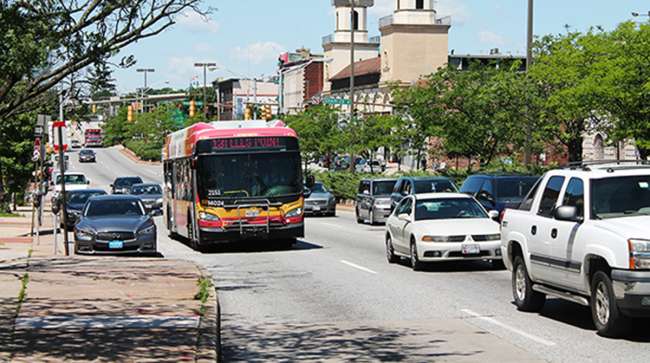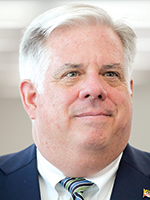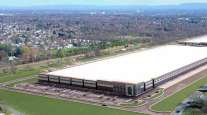Maryland Leaders Continue Requests for Highway User Revenue

ANNAPOLIS, Md. — Municipal leaders and transportation advocates continued their nearly decadelong plea to restore pre-recession levels of highway user revenue on Feb. 22.
The House Environment and Transportation Committee heard two of at least four House bills introduced this General Assembly session that aim to get more of the money collected from the state gas tax to local governments.
Highway user revenue funding declined sharply in the wake of the 2007 recession as the state struggled to meet expenses. That year, Frederick County received around $13.8 million. By comparison, Gov. Larry Hogan’s (R) most recent budget proposal included $2.2 million in highway user revenue for the county, about $100,000 more than the previous fiscal year.

Hogan
Supporters of restoring highway user revenue said that it was difficult for local governments to plan their budgets when the funding was doled out in grants. Rockville Mayor Bridget Newton testified that because the city has had to use more general fund resources on roads, it hasn’t been able to hire the police officers it had planned to.
A standing-room-only crowd of mayors and municipal leaders showed up in support of House Bill 807, which would increase municipalities’ share of highway user revenue to 2.8% of the fund by 2021.
That would represent a significant change from the bill’s proposed fiscal 2019 distribution, which leaves the Maryland Department of Transportation with 90.4% of the revenue and municipalities with .4%. Baltimore city, which maintains all the roads and highways in its jurisdiction, would increase its share from 7.7% to 8.9% if the bill were to become law. Counties would maintain a 1.5% share.
Delegate Karen Lewis Young (D-District 3A) also presented her proposal, House Bill 854, which aims to increase counties’ share of highway user revenue.
Her plan would roll out the increased funding over a longer period of time, but would ultimately leave counties and municipalities with more highway user revenue. Starting from fiscal 2019, it decreases MDOT’s share from 85% to 70% by fiscal 2022, while increasing county funding levels from 6% to 15.3% and municipalities’ share from 1.1% to 2.6%.
Frederick Mayor Michael O’Connor spoke in support of Lewis Young’s bill, estimating that the city was down $18 million from where it would have been if the highway user revenue formula had remained in place. He noted for context that a recent road survey found that it would cost $20 million to make the most necessary repairs to city roads.
Candace Donoho, of the Maryland Municipal League, expressed support for both highway user revenue bills, but wanted to see an amendment to Lewis Young’s bill that would shorten the phase-in period to two years.
Lewis Young encouraged the committee to bring one of the highway user revenue bills to a vote, even if it wasn’t hers. With fewer sponsors and fewer members of the Environment and Transportation Committee signed on, Lewis Young’s proposal could face an uphill battle.
Other bills that aim to increase highway user revenue include House Bill 1361, a constitutional amendment that would bring MDOT’s share to 70% and split the local 30% share up with 12.1% going to Baltimore, 15.3% going to counties and 2.6% going to local governments.
Distributed by Tribune Content Agency, LLC




